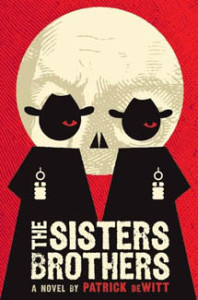Set against the historical backdrop of the California Gold Rush, Patrick DeWitt’s titular heroes are brothers Charlie and Eli Sisters, who are also assassins, on a mission to kill a prospector named Hermann Kermit Warm. This combination of memorably comic names, historical setting, and tone described within the premise completely encapsulates all one would need to know about this beautifully bizarre novel. Additionally, however, and to even higher distinction, the novel’s picaresque structure is wrought with exceptional creativity that further distinguishes this work from its many contemporary genre peers and deserves very high praise.
Narrated by Eli Sisters, the brothers serve as assassins for the Commodore—an authoritative figure that tasks the boys with jobs requiring more dangerous or fatalistic endings. The task at hand demands the brothers seek out and kill a one Hermann Kermit Warm—a prospector that has apparently stolen from the Commodore at the cost of his life. The novel is told with a picaresque structure of extremely short, yet memorable, narration of the brothers’ adventures and mishaps in their search for Warm across the Western landscape.
Tonally, the novel strikes a very rare and impressive balance between hilariously sharp dialogue and darkly comic situations that slowly navigate toward scenes of heartbreaking tragedy and acute poignancy. The only real tonal parallel that one may suggest is something close to that of the filmic works of the Coen Brothers, though DeWitt’s original voice still separates itself from those exceptional storytellers. Moreover, the tone complements the pacing of this episodic narrative to very impressive results. The book is an undeniable page-turner without ever losing the depth of its characterization or sacrificing any of the various emotional levels at play.
Though the book touches on a number of familiar Western genre staples—from assassins, to Mexican standoffs, to the larger themes of men imposing their morals upon others within a burgeoning civilization—the novel also successfully eschews many of these classical expectations to surprising and thought-provoking results. Despite the brothers’ job title of assassins, and the numerous violent acts that populate the narrative, the characters are imbued with a very touching and moving sense of pathos very unlike those found in the brutal landscapes occupied by traditional Western fiction. There are questions of moral ambiguity explored within this novel to incredibly successful results that bring to mind aspects of contemporary western writer S. Craig Zahler’s revelatory work (my favorite fiction writer: both A Congregation of Jackals and Wraiths of the Broken Land are masterpieces). Specifically, there are interludes wherein the protagonist confronts what may be the Devil/evil incarnate through the form of a little girl that remains one of the book’s most resonant and thought-provoking creations.
The Western genre stands as one of the best prisms for an author’s exploration of those thematic aspects of their obsession in tandem with those central themes to the American narrative at large. Themes of masculinity, spirituality, luck, the cost of success at the sacrifice of a man’s morals—these are all ideas embedded within the myth of American man and which the Western genre often explores through its setting of a terrain caught between civilization and barbaric tribalism. As the best Westerns are capable, The Sisters Brothers offers a fascinating and praiseworthy peak into DeWitt’s version of these central tenets: allowing a new perspective on both those time-honored traditions of the genre and those specific literary realizations brought forth by his imagination.
